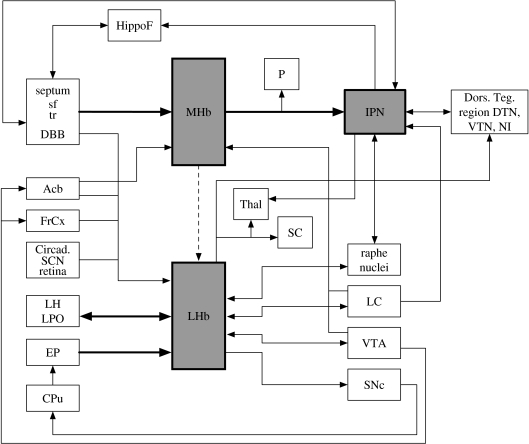Figure 1.
Connectivity of the DDC. This schematic shows the principal connections of the medial and lateral habenulae and interpeduncular nucleus as described in mammals, in particular the rat. Thick arrows highlight the septum–MHb–IPN axis and the convergence of limbic and striatal inputs into the lateral habenula. Notably, there are very limited data regarding the relative functional importance of the various connections shown here. Acb, nucleus accumbens; Circad., potential sources of circadian information; CPu, caudate/putamen; Dors. Teg. region, dorsal tegmental region; DBB, nucleus of diagonal band; DTN, ventral tegmental nucleus of Güdden; EP, entopeduncular nucleus; FrCx, frontal cortex; HippoF, hippocampal formation; IPN, interpeduncular nucleus; LC, locus coeruleus; LH, lateral hypothalamic area; LHb, lateral habenula; LPO, lateral preoptic area; MHb, medial habenula; NI, nucleus incerta; P, pineal; SC, superior colliculus; SCN, suprachiasmatic nucleus; SNc, substantia nigra pars compacta; sf, septofimbrial nucleus; Thal, thalamic nuclei; tr, nucleus triangularis; VTA, ventral tegmental area; VTN, ventral tegmental nucleus of Güdden.

